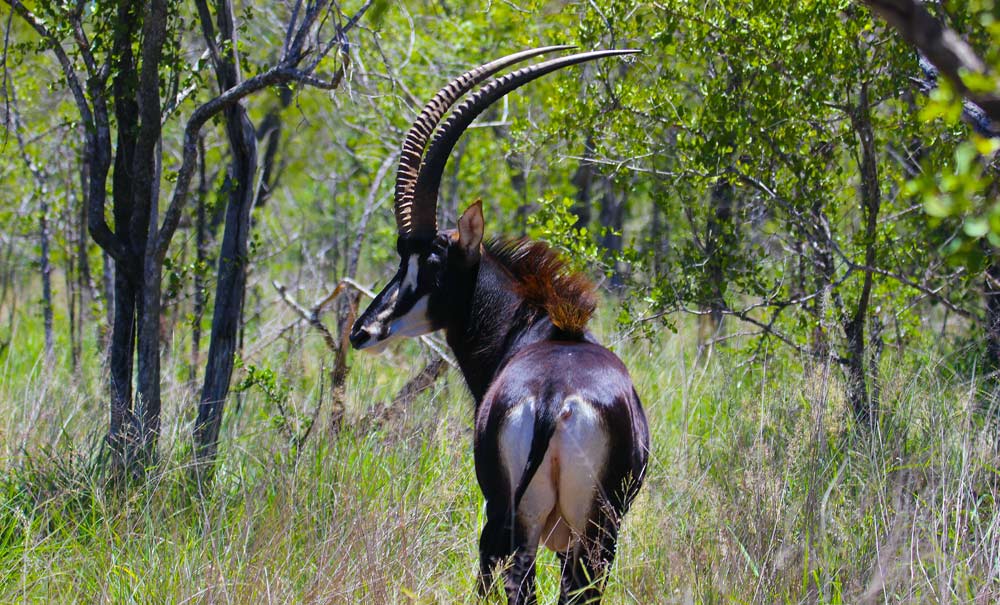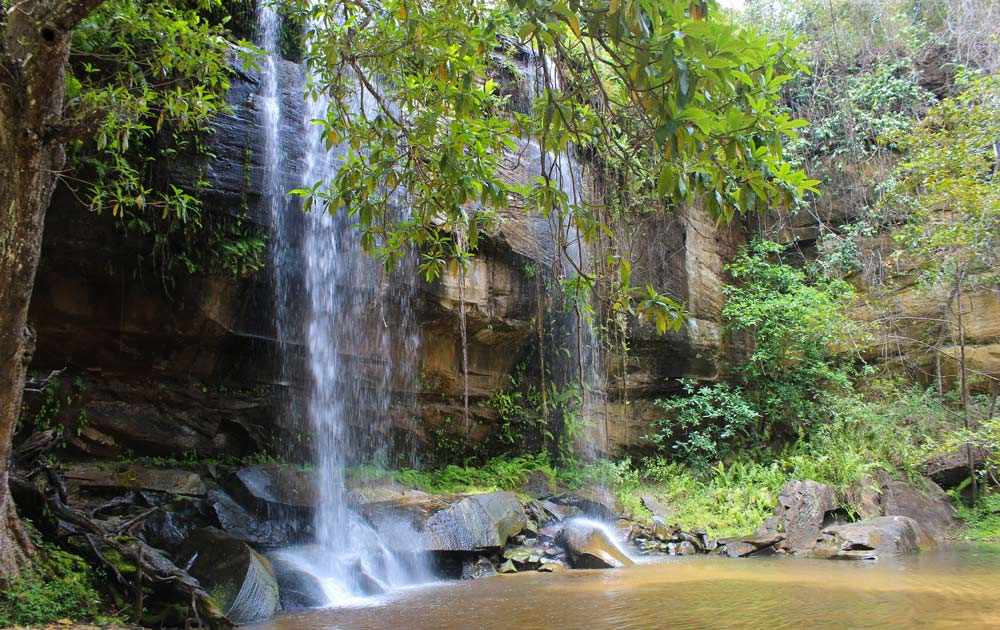Floating a misty-cool 400 metres above the palm-fringed beaches of Kenya’s glittering coastline, Shimba Hills National Reserve offers a unique visitor experience. The Reserve offers a blend of wood-cloaked downs, wandering elephant, breeze-fanned hills, plunging waterfalls, liana-strung jungle and the primeval stillness of one of the last remaining coastal rainforests on earth.
Famed as the only Kenyan habitat of the rare and magnificent sable antelope, Shimba Hills is just thirty minutes from the beach. It commands panoramic vistas over the Indian Ocean and plays host to one of the most enchanting tree hotels in Kenya.
Ancient forest
After the blazing brightness of the beach, these coastal hills promise cool and shade. They also offer some truly panoramic picnic sites with views stretching down the forested flanks of the escarpment to the hazy blue of the Indian Ocean. On a clear day you can also see the imposing mass of Mount Kilimanjaro rising behind the Taita Hills to the west.
The Reserve hosts one of the largest areas of coastal forest remaining in East Africa. It is also home to some of the oldest plants on earth – many of the massively buttressed forest trees being centuries old. Older still, in origin at least, are the fern-like cycads, age-mates of the dinosaurs that first flourished on earth some 200 million years ago.
Last sanctuary of the magnificent sable antelope

Shimba Hills offers sanctuary to Kenya’s last breeding herd of indigenous sable antelope. Perhaps the most beautiful of the large antelopes, the hard-to-spot, solitary, territorial males have a satin-smooth, jet-black coat and majestic sweeping horns. While the dark reddish-brown females congregate in groups and are thus more easily spotted.
Although one of the smallest Reserves in Kenya, Shimba Hills also protects the bulk of Kenya’s black-and-white colobus population while providing shelter to a number of translocated Maasai giraffe and plains zebra.
The perfect place to spot elephants

The Reserve holds substantial numbers of elephants, which may be seen to unique advantage against the unusual backdrop of gentle downs and leafy forest. Herds can be found all over the Reserve but Elephant Hill is a good place to start.
Explore the sacred kayas
Deep in the ancient forests are a number of sacred kayas, the ancient spiritual centres of the Mijikenda people. Originally fortified residential sites, the kayas are now largely uninhabited but still widely used for sacred ceremonies and burials. Visits can be arranged through your hotel.
Read more about the sacred kayas here.
Walk in the wilderness and bathe at Sheldrick Falls

For the more energetic, the trail leading down through the lush woodlands to the spectacular torrents of the 21 metre high Sheldrick Falls offers a scenic walk, a plunge in the pool or a picnic by the cascades. You may also see blue monkey, buffalo and elephant on the way.
An ornithologist’s paradise
More than 230 species of bird have been recorded in the Reserve, which also offers sanctuary to 13 rare or restricted species. The Reserve also hosts Palaearctic birds during late March – early April. The Reserve is host to about 35% (300 species) of Kenyan butterflies.
Mwaluganje Elephant Sanctuary
Immediately adjacent to the Shimba Hills National Reserve is the spectacular Mwaluganje Elephant Sanctuary, which provides the elephants with an ancient migration route between the Shimba Hills and the Mwaluganje Forest Reserve. Home to some 150 elephants, such is wide open landscape of the sanctuary that multiple elephant sightings are guaranteed while the photo opportunities are unrivalled.
Shimba Hills – Need to know
By road, Shimba Hills is approximately 50 km south-west of Mombasa and can be easily accessed from Diani or Ukunda – buses and taxis are in plentiful supply. It is also possible to stay in an enchanting self-catering chalet with stunning views over the tree canopy.
For more information, visit the Kenya Wildlife Service website.
© 2025 Kenya Holidays
